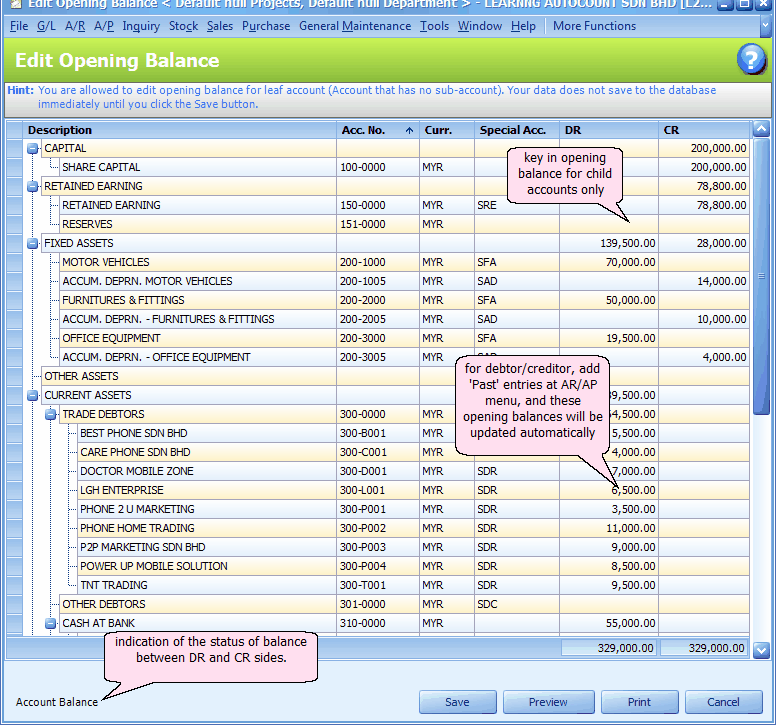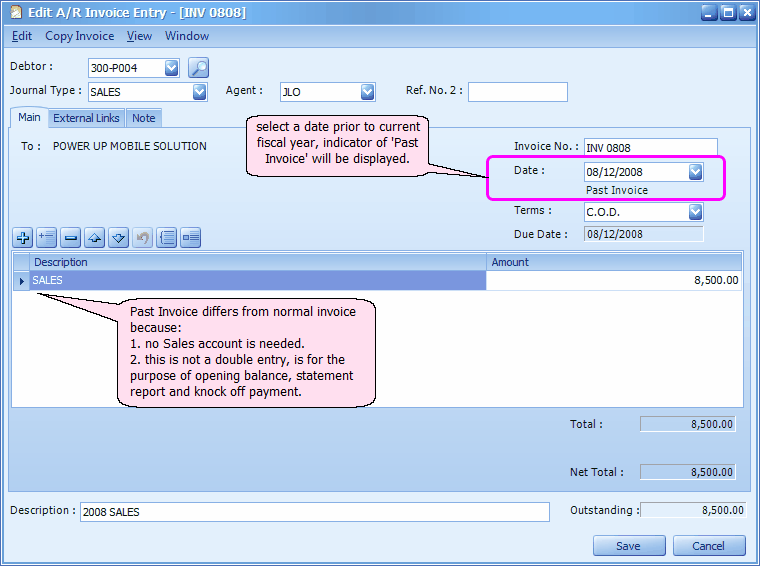This is used to key in opening balances of current fiscal year when Actual Data Start Date is the same as Start Date of current Fiscal Year.
(also refer to FAQ: How To Enter Opening Balance - GL)
Go to G/L > Opening Balance Maintenance

Note:
1. key in balance amount only in child accounts (which carry no further sub-accounts); the total amount will be auto-filled into their parent account.
2. the value of Balance Sheet Stock keyed in here will update the value of closing stock (the last month of the year prior to current fiscal year) at G/L > Stock Value Maintenance (of course with the condition of: the previous fiscal year was added in Manage Fiscal Year). Be aware that if you change that value of closing stock of the last month of the year prior to current fiscal year, the changes made in Stock Value Maintenance will not update the value in Opening Balance Maintenance.
3. it is advisable not to key in opening balances of personal account (debtor/creditor) here directly, instead, add 'past entries' at AR/AP menu and the debtor/creditor opening balances will be updated automatically.
* to allow directly key in opening balance for debtors/creditors, go to Tools > Manage Fiscal Year, highlight current fiscal year, check the checkbox of ![]() . It is not advisable to key in debtor/creditor opening balance in this way because it keeps no record of entries, thus will not be shown in debtor statement and knock off payment is not available.
. It is not advisable to key in debtor/creditor opening balance in this way because it keeps no record of entries, thus will not be shown in debtor statement and knock off payment is not available.
* go to AR/AP menu to key in 'Past' entries or 'YTD' entries such as Invoice, CN, DN, Payment.... If you do not wish to key in all the outstanding bills one by one, you may just add one Past or YTD invoice with the total (one lump sum) outstanding balance. The amounts of Past/YTD entries will be updated to Opening/YTD Balance; if not, go to Tools > Manage Fiscal Year, highlight the current fiscal year, click on ![]() or
or ![]() .
.
Past Entries
Past entries means A/R or A/P entries (usually Invoice, but also including Payment, DN, CN...) that is created with a date prior to current fiscal year.
For example: A/R Invoice

YTD Entries
YTD (Year-To-Date) entries means A/R or A/P entries (usually Invoice, but also including Payment, DN, CN...) that is created with a date on/after Start Date of current fiscal year but prior to Actual Data Start Date.
For example: A/R Invoice

_____________________________________________________________
Send feedback about this topic to AutoCount. peter@autocountSoft.com
© 2010 Auto Count Sdn Bhd - Peter Tan. All rights reserved.